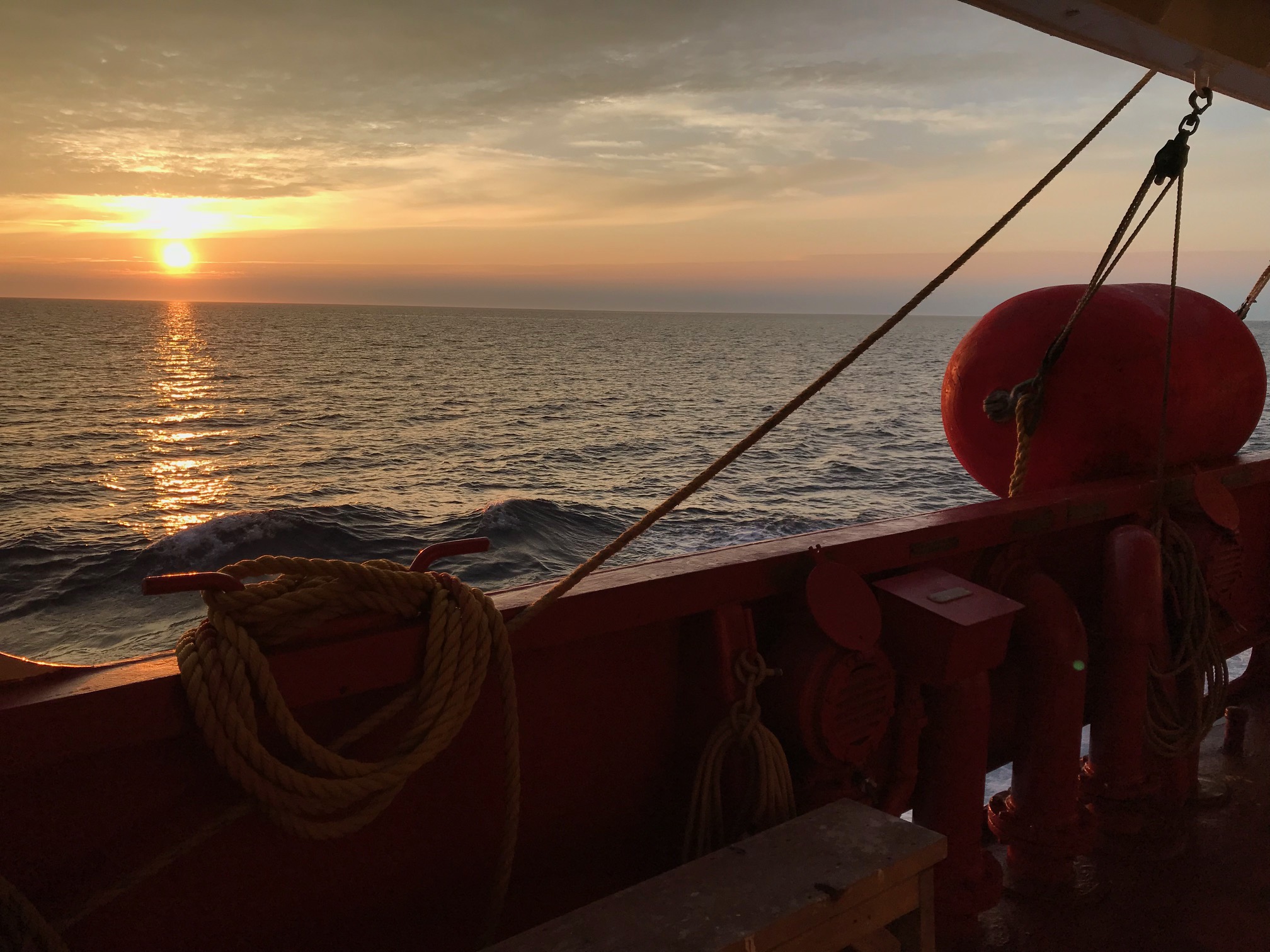Shedding Light on Arctic Marine Ecosystem Services – Field Report
SHEDDING LIGHT ON ARCTIC MARINE ECOSYSTEM SERVICES | FIELD REPORT
Sentinel North International PhD School | July 12-24, 2018
The second edition of the Sentinel North International Ph.D School sets its course towards Baffin Bay in Nunavut, Canada. The team of 19 students and 22 mentors from 12 different universities have boarded the CCGS Amundsen Canadian research icebreaker as part of a unique experience aimed at studying the role of light in driving arctic marine food webs, ecosystems services, and human health in the North.
In addition to exploring the majestic fjords of Baffin Island as part of an actual high-tech ocean research program, the school’s participants will meet with members of northern communities in a spirit of exchange where traditional knowledge joins cutting-edge technology towards a better understanding of a global issue.
Follow this one-of-a-kind adventure right here as young scientists of excellence experiment hands-on with the tools of the trade. They will train in the fields of optics, oceanography, biochemistry, health, physics, remote sensing and biology, while at the same time keeping a sharp focus on the underlying social and cultural aspects of the fundamental role of light in the Arctic Ocean.
Learn more about the School’s program and faculty, and follow the Amundsen’s journey in real-time.
DAY 4 – THE CALM BEFORE THE STORM
July 15 – by Marion Lebrun, Vanessa Pitusi, Raphaël Larouche and Emiliano Cimoli
Today, we were introduced to remote sensing technologies, which are very important to help us address some of the scientific questions at the core of the School. Through lectures and demonstrations, we learned about powerful tools that harness imagery, artificial intelligence and even satellites (yeah!) to count and classify living and non-living particles in the Arctic Ocean. Very impressive stuff! We were also introduced to robot-like autonomous platforms that are used to reach deeper regions and monitor all kinds of phenomenons in Arctic waters.
What is even more interesting is that we were shown some of the actual so-called “toys”. An ARGO float was shown and described in detail. An ARGO float consists on an automated buoy that wanders the ocean while acquiring meaningful data such as solar light, water salinity and temperature. We can’t wait to be actually testing these technologies in the field in the coming days, what an opportunity!

Claudie and José describing the ARGO float
During the lunch break, some of the crew watched the World Cup final – three words: Vive la France!
Ship crew and scientists alike intensely watching the World Cup final
Following the familiarization tour of the ship the previous day, we had a practical exercise during the afternoon. By no means was it stressful, but the thought of being stranded in the Arctic Ocean was not quite a comfortable one. The exercise started with an alarm that brought us on deck and had everyone cramped into a lifeboat like sardines in a tin (luckily, it did not smell like one).
Ready to turn into human sardines
Prior to the emergency exercise, we crossed the 66° parallel, which meant we had entered the Arctic Circle (the goal of the School). Following the crossing, an Arctic initiation followed and we started preparing for our field campaigns with much excitement! We then spent the evening watching a film about the Green Edge project, which fueled the idea behind this Sentinel North PhD summer school – it was really insightful.
The view isn’t that bad, is it?
(photos by Marion Lebrun)
DAY 3 – BREAKING ICE AND MEETING POLAR BEARS
July 14 – by Marie-France Gévry, Sentinel North training coordinator
We went to bed last night as the ship was being caressed by gentle arctic waves. But when we woke up, the abrupt collisions were telling us that we had reached sea ice. Keeping a firm hand on the safety handle while taking our shower had become a necessity!
We started the day with a first group of elevator-pitch student presentations that allowed us to get to know more about each other’s current research projects. Then, lectures about marine optics (AOP, IOP) and sea ice physics were given by Emmanuel Boss and Christian Katlein. The highlight of the day was certainly when the wheelhouse announced there was a family of polar bears on the ice, near the ship! We all ran on the deck with our cameras and enjoyed the sight of a female bear jumping from ice block to ice block with her two cubs. Being so close to them right in their natural habitat made us realise the privilege we have.

Well, hello you! (photo: Luca Arduini Plaisant)
In the afternoon, we had a familiarization tour of the ship with the coast guard staff, essentially to present us with safety procedures in the case of an emergency. Among other things, we saw the emergency boat that can fit up to 50 people in the case of an evacuation (which we sure hope won’t happen!). We also had lectures about ice optics and DMS and regulation services of the ocean by Chrsitian Katlein and Martine Lizotte.

50 people can fit in that emergency boat!
In the evening, chief scientist Marcel Babin showed the most recent local ice maps and explained that the abundance of ice in the Frobisher Bay hindered our progress, and delayed the estimated arrival time to our first research station.

Sea ice is forcing us to review our schedule
We then had a very interesting discussion about the main theme of the School, Arctic marine ecosystem services, which can be either provisioning, regulating, cultural or supporting services. Among other things, we’ve been able to appreciate the importance of the scale (both time and space) and how everything is interconnected. We debated one key question: should we put a monetary value on Arctic marine ecosystem services? Is it dangerous to associate money with ecosystem services? We realised how complex and tricky this issue, as very often we don’t have enough information to establish the value of a species or an ecosystem. Finally, we agreed on the importance of having a more holistic view of ecosystem services.
Our third day ended with a beautiful sundip, as daylight fades out very fast on the Arctic horizon.

DAY 2 – BOARDING THE AMUNDSEN
July 13 – by Marie-France Gévry, Sentinel North training coordinator
Today, we all woke up knowing it was going to be a special day, and indeed it was! The excitement was palpable, as it was going to be a “first time” for many of us : first time on a helicopter, first time wearing an immersion suit, first time on an icebreaker ship, and so forth.
The day started smoothly with a series of lectures in Iqaluit. We were first introduced to Arctic biodiversity by Lee Karp-Boss, trying to answer key questions such as “Why should we care about biodiversity?”, “Why some regions have more biodiversity than others?”, “What are the Arctic environment distinctive traits?” and “How to know if we sample enough to define the biodiversity of the Arctic ocean?”. Very instructive.

Lee Karp-Boss, Jean-Eric Tremblay and Vicki Sahanatien shared their expertise in Arctic biodiversity and wildlife
Next, invited speaker Vicki Sahanatien introduced us to the Arctic wildlife and presented the diversity of sea ice habitats and the impacts of their variation in the context of a changing Arctic. Jean-Éric Tremblay, already in the field from the previous Leg (2a) of the Amundsen, joined us on the land to talk about the primary production and nutrients of the Arctic Ocean, and how important they are for the whole food chain. Many of the concepts used to describe the biodiversity and primary production were new for many of us with a physics/engineering background, but everyone was up to the task!
Then the big moment came. We donned the immersion survival suits, somehow feeling like astronauts before take-off! The 5-min helicopter ride to the Amundsen was smooth and offered a scenic view of Frobisher Bay. Finally on board, every participant and mentor took the pace of the ship and began discovered what was going to be their home for the next 12 days.

For most of us, donning immersion suits was a first
The serious stuff continued as we learned the basic concepts of physical oceanography and optics, by Achim Randelhoff and Emmanuel Boss. It was very nice to see the physicists now acting as mentors for other members of the group!

Achim Randelhoff and Emmanuel Boss taught us about physics oceanography
Our day ended up with an “icebreaker” activity to get to know each other a little bit better (without actual icebreaking unfortunately, as we haven’t reach the ice yet!). It was just a perfect day for all of us and a great start to a unique odyssey.

DAY 1 – SETTING FOOT NORTH OF 64TH PARALLEL
July 12 – by Marie-France Gévry, Sentinel North training coordinator
Our Arctic adventure started today, with a scenic flight from Quebec to Iqaluit, capital of the Nunavut territory. The Dash-8 plane was so heavily packed with its 32 passengers and the scientific luggage that 2 stops were required on the way, first in Schefferville and then in Kuujjuaq. With clear blue skies, we could finally see the North and begin to realise its immensity.

En route!
Six and a half hours later we arrived in Iqaluit and went directly to the Nunavut Research Institute. Chief scientist Marcel Babin first introduced us to the Green Edge Project, its objectives and main work packages. Led by the Takuvik research unit, this project took place in Baffin Bay near Qikiqtarjuaq in 2015-2016. Its aim was to understand and document the spring bloom and its role in the ocean of tomorrow, using remote sensing, paleoceanography, modeling, optics, local knowledge, etc. We ought to provide new insights to the work initiated by the Green Edge Project when the School is finished.

Iqaluit
The Director of the NRI Mary Ellen Thomas welcomed us with some gifts, explained the role of her organisation, and invited us to discover the city before dinner. The feast was generously hosted by Inukpak Outfitting at Apex Beach, in an old Hudson Bay Company building, and consisted of a traditional meal that begun with a Qulliq lightning ceremony with an elder, Roda. We enjoyed this country food as one brave member of our group dared the Arctic Swim in the radiance of the bonfire, sole light in the northern sky.

Dinner on the Apex Beach
ABOUT THE SENTINEL NORTH INTERNATIONAL PH.D. SCHOOLS
As part of the Sentinel North training programs, the International Ph.D. Schools combine a practical approach in northern and/or highly technological environments with the opportunity to interact with high-profile scientists and experts. They provide international students with a chance to learn with world-class research infrastructure as well as specialists from various fields and domains.
This school is possible thanks to a key collaboration with the following partners:
- Alfred-Wegener Institut
- Amundsen Science
- CNRS – Laboratoire d’océanographie physique
- Inukpak Outfitting
- Laboratoire océanographique de Villefranche-sur-Mer (LOV)
- Municipality of Qikiqtarjuaq
- Nunavut Research Institute
- Takuvik
- University of Maine
And funding from the Canada First Research Excellence Fund.
TO SEE
RESEARCH PROGRAM
3 transdisciplinary research themes fostering innovation, partnerships and technology transfer

